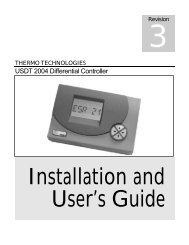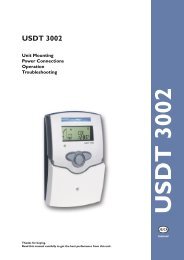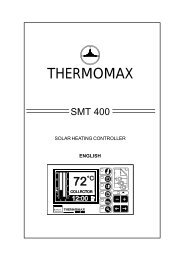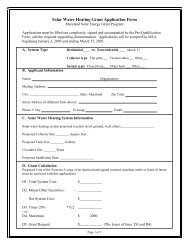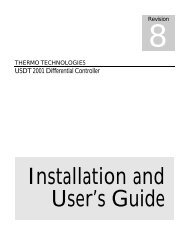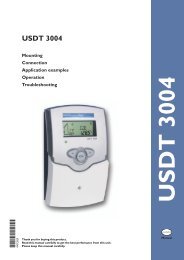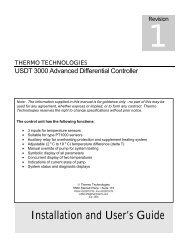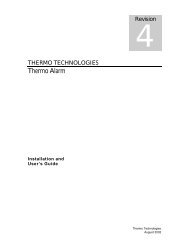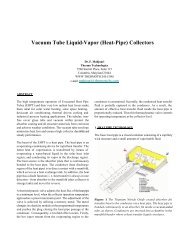Analog Differential Controller - Thermomax Technologies
Analog Differential Controller - Thermomax Technologies
Analog Differential Controller - Thermomax Technologies
- No tags were found...
Create successful ePaper yourself
Turn your PDF publications into a flip-book with our unique Google optimized e-Paper software.
INSTALLATIONNote: This installation procedure is for guidance only, and the installer should verify itssuitability. Make sure that the solar/boiler system is physically installed, manually tested, and isready for controlled operation.T he following safety precautions are strongly recommended:1. Before attempting to install and operate the unit read this instruction manual carefully.2. Only suitably qualified personnel should carry out installation and any maintenance required.3. It is recommended that the unit be connected to the power supply via a suitably 6 ampsisolating switch.4. WARNING: When the unit is connected to the 115-volt power supply and the cover isopened, high voltage circuits will be exposed. Therefore, when installing the unit ensureall required connections are made and the cover is attached to the controller box beforeturning the power on. Ensure that all the connections are secure. If any maintenance work isrequired ensure that the unit is isolated from the power supply before removing the cover.Never leave the unit unattended if the cover has been removed and the power supplyis connected.5. Do not exceed unit ratings of 2.15 amps (1/6 HP or 245 Watts pump).6. It is advisable to route power cables away from sensor cables.Sensor installation: Temperature sensors may be installed in fluid lines by mounting in atee or strapping it to the piping directly. For the system to function correctly, it is veryimportant that the sensors are located and installed properly. Make absolutely sure that they arepushed completely into the optional sensor pockets (Thermowell is not supplied). Sensors mustbe well insulated in order to prevent them from being infl uenced by the ambient temperature.When used outdoors, no water should be allowed to get into the immersion sleeves (lastingimpedance change). Generally, sensors should not be exposed to moisture (e.g. condensation)as this can diffuse through the cast resin and damage the sensor. Heating at approx. 195 °F forone hour may possibly save the sensor.When sensors are used in open loops or swimming pools, make absolutely sure that immersionsleeves (sensor pockets) are corrosion-resistant.3



